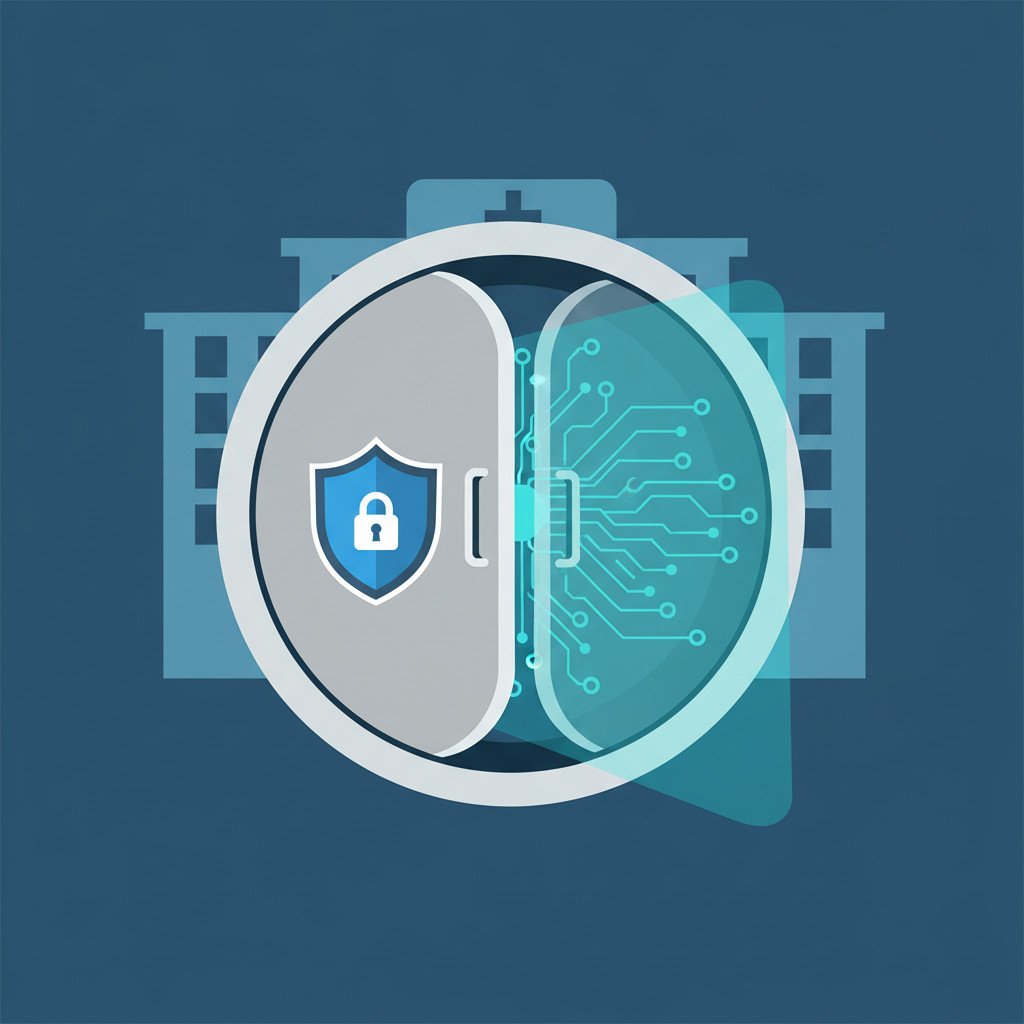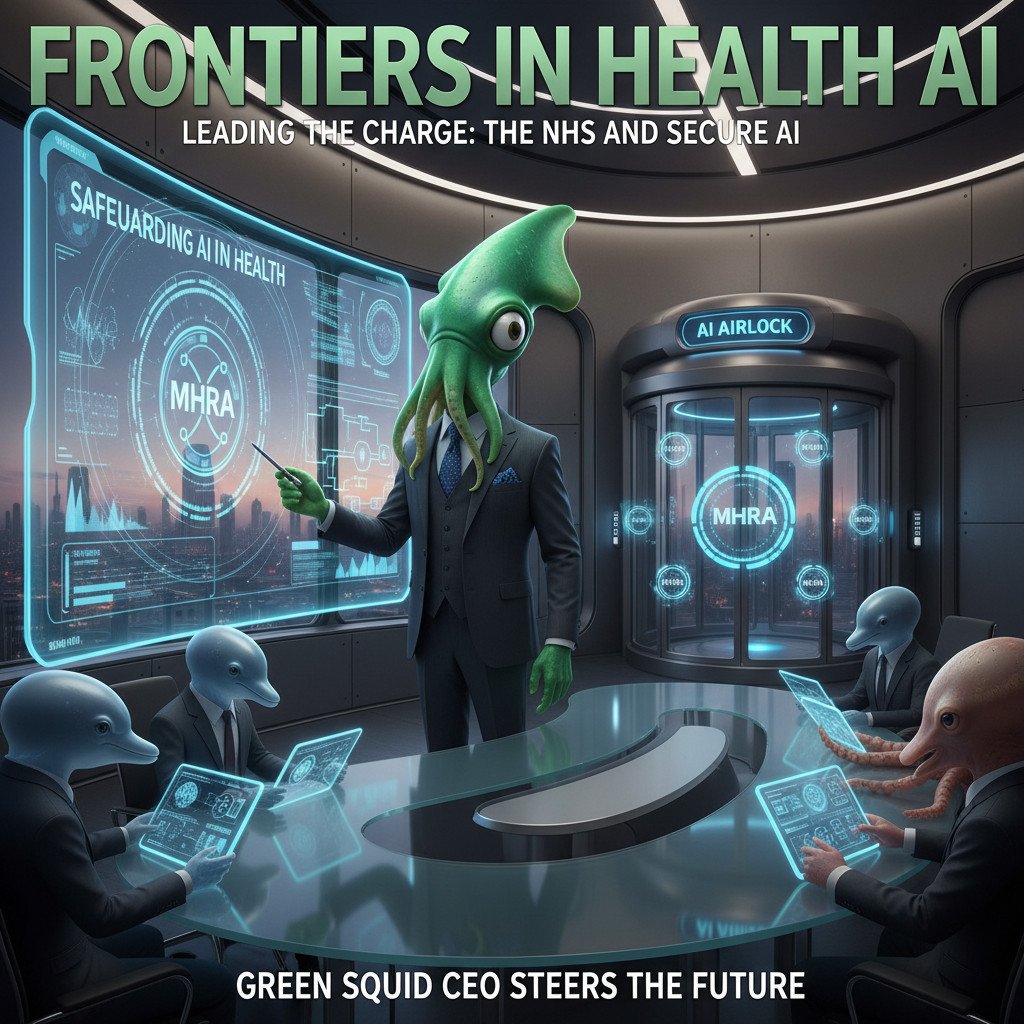The AI Airlock regulatory sandbox gives innovators a safe, supervised path to test high risk AI medical devices. Run by the MHRA, it lets development teams trial tools in real clinical settings under watchful expert review. As a result, developers get faster feedback loops and clearer routes toward regulatory approval and deployment. Because patient safety remains paramount, the sandbox balances speed with strict validation and monitoring processes.
The sandbox covers diagnostics, clinical note automation, imaging interpretation, and decision support systems. Moreover, it generates real world evidence to shape future MHRA rules, guidance, and approval pathways. Collaborative sprint cycles let regulators and creators resolve explainability, bias, and safety issues early. Consequently, this approach reduces uncertainty for companies, clinicians, and patients while speeding progress.
This article explains how the AI Airlock regulatory sandbox works in practice and why it matters now. We will explore case examples from the first cohort, regulatory implications, and likely market effects for healthcare. Therefore, expect practical insights for innovators, investors, NHS leaders, and clinical teams seeking safe AI adoption. Read on to learn how this sandbox model can speed safe, scalable AI innovation across patient care pathways.
What is the AI Airlock regulatory sandbox?
The AI Airlock regulatory sandbox is a controlled environment where developers test AI as a medical device. Run by the MHRA, it allows real world trials under regulatory supervision. As a result, teams can validate safety, performance, and explainability before full market approval.
How it works
First, selected projects enter a defined testing window. Then, regulators, clinicians, and developers co-design study protocols. Weekly meetings drive iterative fixes and rapid learning. Moreover, test sites collect real world evidence to inform approvals and future rules. The programme also feeds insights to the National Commission into the Regulation of AI in Healthcare, shaping long term policy.
Key features and benefits
- Real clinical settings for high risk AI testing, improving external validity
- Close regulator access, which reduces approval uncertainty
- Rapid feedback loops, therefore accelerating development cycles
- Emphasis on explainability, bias checks, and patient safety
- Data governance and synthetic data validation to protect privacy
- Outputs that inform MHRA guidance and wider regulation
Why it matters for industry and patients
Because AI models can behave unpredictably, early supervised trials matter. The sandbox balances speed and safety, so patients gain benefits sooner. It also lowers investor risk by clarifying regulatory pathways. Consequently, NHS adoption becomes more feasible for scalable AI tools.
Expert perspectives
“As the first country to create a dedicated regulatory environment, or ‘sandbox’, specifically for AI medical devices, we’re pioneering solutions to the unique challenges of regulating these emerging healthcare technologies,” said Lawrence Tallon, noting the value of close collaboration. Yinnon Dolev called participation “a very positive experience,” adding that weekly regulator interaction expedited development.
For programme details and cohort announcements, see the MHRA briefing on applications and cohort results and the latest selection of seven tools for testing.

Evidence and case studies: AI Airlock regulatory sandbox
The AI Airlock regulatory sandbox has produced practical evidence from real trials. MHRA pilot reports and cohort announcements show measurable progress. For official summaries, see the MHRA pilot briefing and the programme expansion notes.
- Cohort outcomes and published reports
- Four analytical reports from the first cohort captured safety checks, explainability tests, and deployment hurdles. Moreover, these reports highlighted how weekly regulator interaction sped development. The findings informed MHRA guidance and fed into the National Commission into the Regulation of AI in Healthcare. For details on the new cohort and selected tools, refer to the MHRA announcement on the next phase.
- Company case studies
- OncoFlow participated to validate advanced cancer diagnostics. As a result, the team resolved edge case performance and improved model explainability. Yinnon Dolev described the sandbox as “a very positive experience,” noting weekly MHRA meetings that expedited development.
- Philips worked on imaging and triage tools. Consequently, clinical site testing improved external validity and clarified evidence needs for approval. Lawrence Tallon said the sandbox demonstrated the value of close collaboration between innovators and regulators.
- Royal Derby Hospital supported pilot evaluations, providing real world clinical workflows. Therefore, test sites captured operational impacts and staff acceptance metrics.
- Measurable benefits and compliance outcomes
- Faster regulatory feedback cycles, which reduced time to evidence collection
- Early detection improvements targeted for bowel and skin cancers, therefore potentially shortening diagnostic waits to minutes
- Stronger data governance and synthetic data validation for privacy protection
- Clearer conformity pathways and reduced investor uncertainty
Regulatory voices underline balance between speed and safety. Zubir Ahmed framed the programme as a step toward an AI-enabled NHS. Sir Andrew Goddard warned against over-promising and stressed safety and trust.
Comparison: AI Airlock regulatory sandbox versus other models
The AI Airlock regulatory sandbox is purpose built for AI medical devices. It pairs high security with hands on regulatory oversight. As a result, it shortens evidence cycles while protecting patient safety.
| Model | Security level | Regulatory flexibility | Technology integration | Compliance speed | Best for | Limitations |
|---|---|---|---|---|---|---|
| AI Airlock regulatory sandbox | High | Moderate to high, with active oversight | Deep integration with clinical systems and workflows | Fast for regulated medical AI when evidence is robust | High risk health AI, diagnostics, imaging | Resource intensive; needs clinical partners |
| General regulatory sandbox (cross-sector) | Medium | High, often flexible for pilots | Basic integration, usually simulated data | Moderate, varies by regulator | Early stage pilots and fintech type innovation | Less suited for clinical safety needs |
| Light touch innovation hub | Low to medium | Very high, experimental rules | Limited integration, often prototype stage | Fast for learning, slow for approvals | Proof of concept and exploratory R&D | Low external validity; not approval ready |
| Self certification framework | Variable | Low regulatory intervention | Easy integration for low risk tools | Fastest for market access if compliant | Low risk tools and internal automation | Weak external validation; higher reputational risk |
| International harmonised sandbox | Variable | Medium, aligns multiple regulators | Varies by partner jurisdictions | Moderate, aims to reduce duplication | Cross border pilots and scale ups | Complex governance and legal alignment |
Key takeaways
- AI Airlock emphasizes patient safety and explainability. Therefore, regulators and clinicians co-design tests. This reduces uncertainty for developers and investors.
- General sandboxes speed experimentation, but they lack clinical rigour. Consequently, they suit lower risk sectors.
- Light touch hubs accelerate learning. However, they rarely provide a clear path to approval.
- Self certification moves fastest, but it increases compliance risk for health products.
Expert voices
Lawrence Tallon praised close collaboration between innovators and regulators. Yinnon Dolev described the sandbox as “a very positive experience.” Sir Andrew Goddard urged caution, stressing patient safety and trust.
Implications for innovators and NHS leaders
Because the AI Airlock regulatory sandbox links trials to regulatory strategy, it offers a practical route to scale safe AI. Moreover, it clarifies evidence requirements and shortens time to meaningful approval.
The AI Airlock regulatory sandbox has shown how regulators and innovators can work together to bring safe AI into clinical care. It pairs real world testing with active oversight, therefore improving trust and generating the evidence regulators need. As a result, teams can move from prototype to clinic faster while protecting patients.
Looking ahead, sandbox models will shape policy, reimbursement, and scale decisions across healthcare. Moreover, they will help resolve explainability, bias, and data governance in practice, which reduces downstream risk. Investors and NHS leaders gain clearer pathways to evaluate impact and compliance. Consequently, the sandbox model can unlock faster, safer clinical outcomes for patients.
EMP0 offers practical solutions that map to these needs, combining secure AI deployment with robust automation and go to market support. For example, EMP0 builds privacy first data pipelines, model explainability toolsets, and compliant automation for clinical workflows. Moreover, the team powers marketing and sales automation to help innovators scale adoption within health systems. Therefore, innovators can pair EMP0 technical expertise with regulatory engagement to shorten time to approval and market entry.
Explore EMP0 profiles and resources to learn more: Website, Blog, Twitter X, Medium, n8n.
What is the AI Airlock regulatory sandbox and who runs it?
The AI Airlock regulatory sandbox is a supervised testing environment for AI medical devices. Run by the MHRA, it supports real clinical trials under regulator oversight. Because trials happen in clinical settings, teams gather real world evidence and address explainability and bias early.
What benefits do developers and patients gain?
Developers gain faster feedback, clearer evidence requirements, and reduced regulatory uncertainty. Patients gain improved safety, earlier detection tools, and validated clinical workflows. In practice these benefits include shorter diagnostic waits and more robust data governance. Moreover, investors see clearer pathways to market.
Which types of AI tools are suited to the sandbox?
The programme focuses on high risk clinical AI. Examples include imaging diagnostics, cancer detection models, clinical note automation, and blood test interpretation. Therefore, any AI tool that directly affects diagnosis or treatment fits best. Low risk administrative tools often follow lighter approval routes.
How do organisations apply and what are common implementation challenges?
Applications require a clear study design, clinical partner, and data governance plan. Common challenges include integrating with hospital IT, managing synthetic or patient data, and proving explainability. Weekly regulator engagement helps resolve these issues. However, resource needs and clinician buy in can slow progress.
What are the future trends and regulatory implications?
Sandboxes will inform national AI rules and reimbursement models. As a result, expect clearer standards on AI explainability, safety testing, and post market monitoring. International alignment will grow, although harmonisation remains complex. Consequently, innovators should plan for continuous monitoring and compliance.
Further reading and guidance is available from MHRA briefings and published cohort reports. If you are building clinical AI, consider how the sandbox can speed validation while protecting patients. Contact regulators early to learn more.

